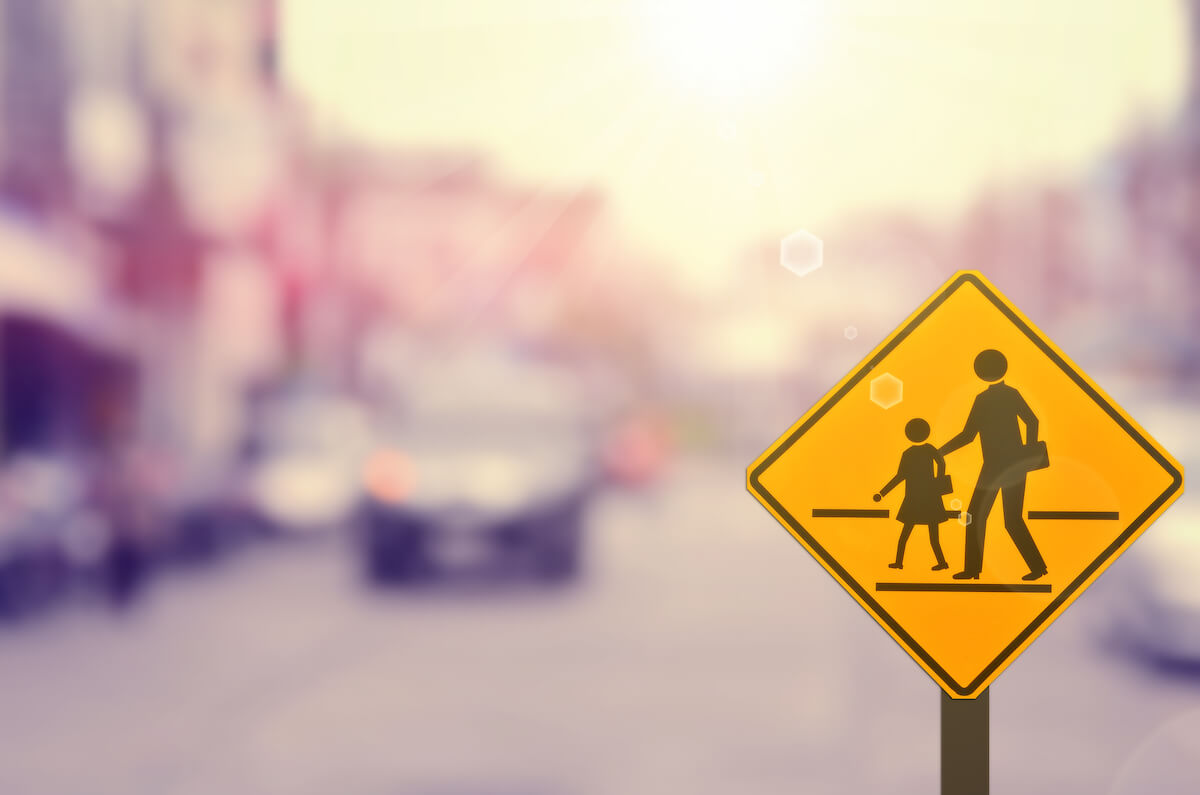If you live in a large city or small town, chances are at some point throughout your day you come in contact with a crosswalk, whether it be as a passenger or pedestrian.
How do you react when you come in contact with a crosswalk? As a driver, do you stop and look both ways before continuing your journey? As a pedestrian, do you assume you have the right of way and that drivers are paying attention?
We’ve found that many people, particularly in our hometown of Montclair, New Jersey, don’t know the latest crosswalk laws.
Too often we see drivers speeding through while there are pedestrians midway in the crosswalk. In this article, we will look at some current crosswalk rules, laws and safety tips, along with the financial impacts that violating these terms can have on individuals.
Current Crosswalk Laws in NJ
On April 1, 2010, a New Jersey Law passed stating that drivers must stop for pedestrians in a marked crosswalk. Prior to its passing, they only had to yield.
This means it requires drivers to come to a complete stop, and stay stopped, when they get to a marked crosswalk where pedestrians are present. If there is nobody nearby, they can simply pass through uninterrupted, but should always observe their surroundings.
If there is not a marked crosswalk, or there are lights that say to stop or cross at an intersection, drivers will have the right of way, and pedestrians should yield to them. Again, it’s important that drivers and pedestrians know the rules, are aware of their surroundings and work together to keep each other safe.
Impacts for Violators of Crosswalk Rules
For drivers who fail to observe crosswalk laws, they are subject to the following:
- Two points on their license
- A $200 fine + court costs
- Up to 15 days of community service
- Insurance premium surcharge
Pedestrians who do not follow the rules are also subject to tickets and fines. Failure to observe pedestrian signals and use of crosswalks at signalized intersections carries a $54.00 fine.
One positive note is that of each fine enforced and collected, a portion of the amount ($100) gets deposited into the “Pedestrian Safety, Enforcement and Education Fund”, which was established in 2005.
Insurance Impacts
As your neighborhood insurance agency and trusted advisors, we’d be remiss if we didn’t dive deeper into the impacts on your insurance premiums we mentioned above.
An insurance surcharge is the amount of money that your insurance provider will add to your premium following a particular event such as an accident or violation of crosswalk laws.
This is because you’re now considered more likely to be involved in an incident or cause harm, which increases the risk that your insurance company will have to pay out a claim on your behalf.
This spike in cost can last several years depending on the severity of the violation and the state you are in. In some states, it’s even connected to the number of points you have, of which in this case you will have an additional two.
We would hate to have to do this to any of our clients, so please continue reading our crosswalk safety tips.
Crosswalk Safety Tips
While the financial and legal implications we highlighted above are a big deal, the most important impact of all is that somebody can be injured or killed.
Imagine being responsible for the death of an individual because you didn’t obey crosswalk laws? Or think about how the family of a pedestrian who was hit would feel.
According to Street Smart, a public awareness and pedestrian safety organization, 177 NJ pedestrians were killed in crashes with vehicles in 2018. That’s nearly fatality every two days – far too many!
As we’ve also mentioned, crosswalk safety is a shared responsibility. With that in mind, Street Smart has several useful tips to implement their safety campaigns into your community. They include:
- Wait for the walk
- Use crosswalks
- Heads up, phones down
- Stop for pedestrians
- Obey speed limits
That said, there are several other tips we came up with that also can be beneficial for drivers, pedestrians and particularly children and seniors. Some of these tips can also be applied to school zones, railroads and other high-traffic areas, although they may have their own set of rules.
Tips for Drivers:
- Watch for pedestrians when making a right on red
- Keep your windshield clean and free of debris
- Don’t text and drive (ever!)
- Don’t drink and drive (ever!!)
- Be on the lookout for bikers, roller skaters, skateboards, scooters and more
Tips for Pedestrians
- Cross at corners and at marked crosswalks (no jaywalking!)
- Look both ways before crossing (Left, right and left again)
- Keep an eye out for turning vehicles
- Walk facing traffic
- Obey traffic signals
- If impaired, use extra caution and walk with others
- Wear reflective attire at night
Tips for Children
- Do not cross between parked cars
- Listen for traffic
- If there is no sidewalk nearby, walk as far off the main road as possible, facing oncoming traffic
Tips for Seniors:
- Make eye contact with drivers before crossing in front of a vehicle
- Use a buddy system and cross with partners or groups
- Avoid crossing in harsh weather conditions
We encourage members of the community to share these tips and legal information with their families, friends, coworkers and more. If you have any suggestions or feedback on how we can work together to make Montclair safer, please contact us here.
